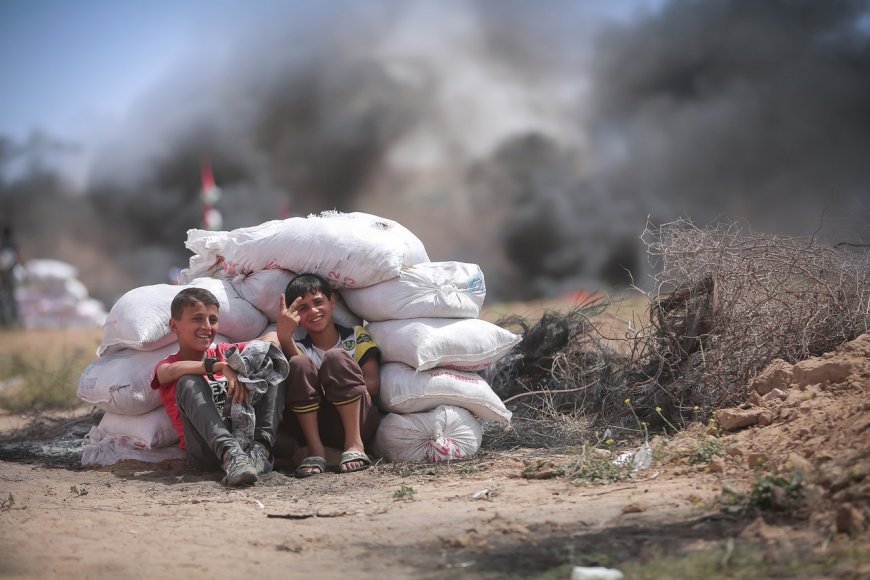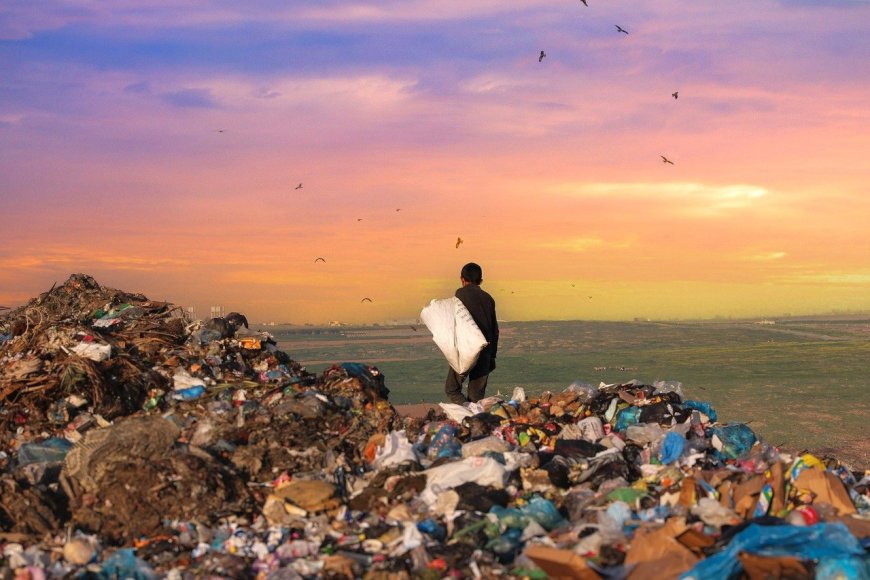Climate Crisis Behind Gaza Destruction
The environmental crisis facing Gaza is reported to also threaten the fate of the environment in Israel.

The destruction of Gaza due to the relentless bombardment of Israeli military operations over the past seven months is also reported to have an impact on the climate crisis, environment, and health. The Ecology and Environment Charity (IFEES/Ecoislam), a UK charity focused on environmental issues, said the action had increased air, soil and water pollution by a factor of two.
Israel's bombing campaign in Gaza is considered the deadliest attack in the history of modern warfare. The scale of the impact of this war on the climate has produced more gases causing global warming than the annual emissions produced by 20 countries vulnerable to climate change, according to a recent study, IFEES writes. The study estimated that Israel's aerial bombing and military response accounted for more than 99% of the 281,000 tons of carbon dioxide produced in the first 60 days of the conflict. This amount is equivalent to burning at least 150 thousand tons of coal.

Hamas rockets fired into Israel in the same period are estimated to yield 713 tons or the equivalent of burning 300 tons of coal. Given the magnitude of the damage from this war, all indications suggest that the climate impact of post-conflict reconstruction will be enormous. According to IFEES, in just two months, the damage from Israel's bombing campaign against the densely populated residential area had exceeded the damage inflicted by the allied bombing of Cologne and Dresden during the second world war.
The Guardian reported that according to the UN, more than 65,000 units of homes have been destroyed. Another 290,000 were damaged by bombing and fighting. The destruction of tens of thousands of homes, based on conservative estimates, is equivalent to destroying the homes of more than 600,000 people in a city the size of Glasgow or Bristol in the space of 90 days.
As the world watches the devastation from 1,000-pound bombs dropped on densely populated residential areas, one might believe that the losses only befall the men, women and children who live in them. Meanwhile, environmental pollution is not very noticeable.
According to insideclimatenews, Gaza obtains about 90 percent of its water from groundwater wells, the coastal aquifer basin, which runs along the eastern Mediterranean coast from Egypt through Gaza and into Israel. But much of that supply was reportedly, “Brackish and contaminated due to seawater intrusion, over-extraction, and exposed to sewage and chemical infiltration,” wrote Natasha Hall, senior researcher at the D.C.-based think tank Center for Strategic and International Studies (CSIS).
In mid-October, an Israeli offensive destroyed a desalination plant and cut off access to aquifers in the Gaza Strip. Water production capacity in the besieged region was only 5 percent of normal levels, according to UNICEF. The United Nations estimated at the end of last year that the average Gazan lives on just three liters of water per day for drinking, cooking, and bathing (by contrast, the average American family uses more than 1,130 liters of water per day at home, according to U.N. estimates).
In addition, all five wastewater treatment plants in Gaza lost electricity in the first few weeks after the conflict. As a result, wastewater flows heavily through roads, leading to an increase in cases of diarrheal illness, a problem that is getting worse. “Incidents of marine pollution in Gaza have led to high concentrations of chlorophyll and suspended organic matter in coastal waters, as well as gastrointestinal parasites. This conflict will most likely escalate the issue,” a UNEP spokesperson told Euronews.

The environmental crisis facing Gaza will reportedly also have an impact with the fate of the environment in Israel. The sewage infrastructure disaster in Gaza is judged not to have happened overnight given that the years-long confrontation between Israel and Hamas has gradually eroded the system, Anas Baba and Scott Neuman covered the history of the issue extensively for NPR in December.
In a recent New York Times opinion column, Thomas Friedman reflected on a column he wrote in 2018 that referred to the “third man” in the fight between Israel and the Palestinians: Mother Nature. In the article, he detailed how Gazans had to dump untreated waste into the Mediterranean Sea—and emphasized that this sludge knows no country's borders.
“Because of existing flows, most of the waste flows north toward the coastal city of Ashkelon in Israel, which is the site of Israel's second-largest desalination plant,” Friedman wrote in 2018. “Gaza waste is being poured into the Ashkelon desalination plant, and the plant has had to close several times to clean the filters in Gaza.”
Without wastewater treatment infrastructure in Gaza, at least 100,000 cubic meters of sewage and wastewater are dumped ashore or into the Mediterranean Sea every day, according to UNEP estimates.
That would reportedly renew the pollution threat to the intake of desalination plants in Israel, Hall and co-authors write for CSIS. All of the region's water and wastewater sources flow into Israel, the West Bank, and Gaza. Both groups of people have an interest in overcoming this crisis before it further damages the health of the environment and society.







